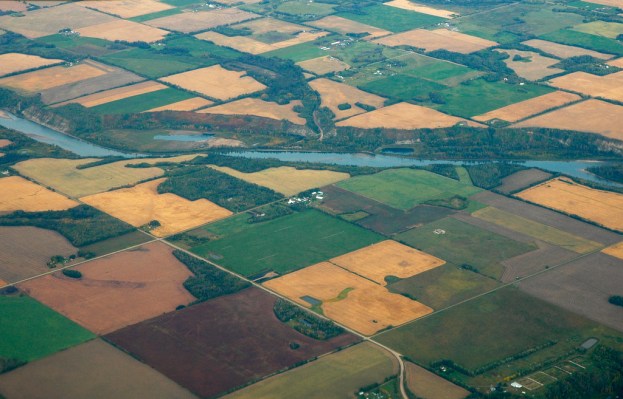As investors, our job is to find the visionaries that dream up the future and partner with them to help make that dream a reality.
In agriculture, with the latest advancements in technology, we half imagined small harvesting robots, skyscraper vertical farms in every city and sensor-studded fields overseen by drones.
Yet, as fun as it is to imagine this kind of future for agriculture, we were hungry for a more comprehensive picture, so we dove in to get an understanding of what the real challenges are — and 10 ways to turn them into opportunities.
Increasing Costs
From an economic perspective, farming is getting more expensive. Inputs (including seeds, fertilizers and herbicides) comprise 38 percent of total costs in Iowa corn production, and labor comprises more than 30 percent of costs in berry production. This scenario has only worsened due to herbicide tolerance, seed-pricing dynamics and the increasing cost of employing a willing workforce.
While economic costs are increasing at an alarming rate, environmental costs are increasing even more rapidly. Water pollution, algal blooms and bacterial resistance will have implications on long-term health. GHG emissions from agriculture have increased by 17 percent since 1990, driven both by livestock manure management systems and soil management practices.
This increase in cost is unsustainable for the industry, requiring us to:
- Reduce the net environmental footprint of agriculture in livestock and crop production
- Use data to better manage the production cycle (e.g., planting, input application, harvesting, etc.)
- Automate the planting, input application and harvesting process to leverage existing resources more effectively
Some technology advancements are particularly timely for addressing these increasing costs — primarily, the low cost of sensors, improvement in computational capabilities and the advancement of machine-learning techniques. Whether it is the ability to capture more data, analyze it more robustly, or act on it more precisely, these are all components that lead to a reduction in inputs, a better management of the production cycle and automating costly processes.
A great example of such advancement is Blue River Technology, a company that is using computer vision and machine learning to build a future in which “every plant counts.” Blue River’s Lettuce Bot is an impressive piece of hardware. The mechanical engineering behind the robot is not trivial, as it gets pulled through fields by large tractors. It is able to visually characterize each plant through real-time image capture and processing, use algorithms to determine which portions of the plant to keep and precisely eliminate the portions of the plants that are unwanted.
Moreover, their Zea product enables high-throughput, field-based phenotyping. Using computer vision, Zea counts plants, measures plant spacing, builds canopy height distributions and measures key physiological parameters — all based on imagery. In our minds, this is machine learning at its finest.
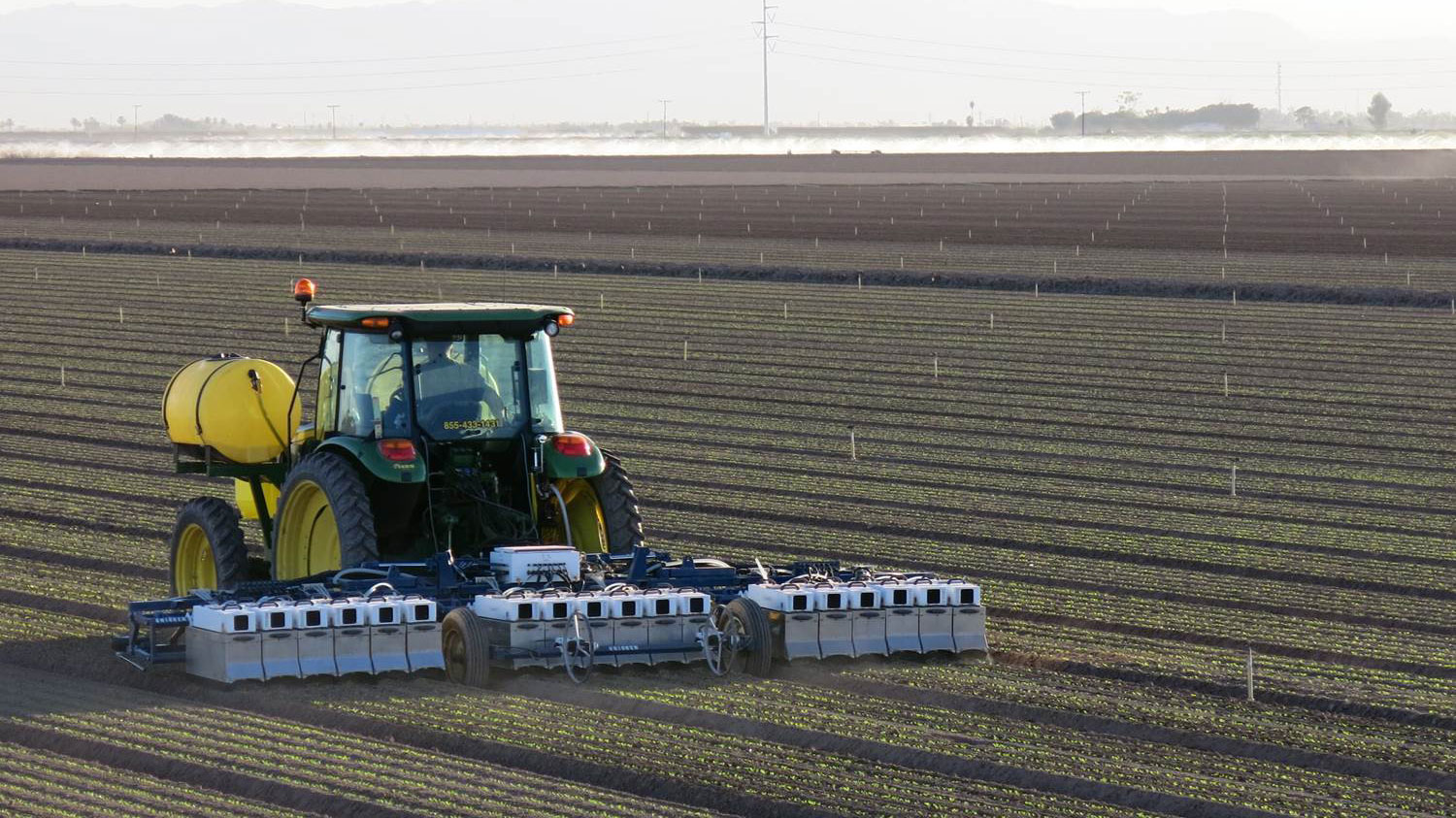
Photo: Blue River Technology
The advancements in data computation and collection are enabling farming to be run as efficiently as a Silicon Valley tech company — with precision, data-driven decisions and automation.
CropX uses three simple, low-cost soil sensors to collect data, cloud analytics to run algorithms and generate adaptive irrigation maps so farmers have a better handle on where their water is going. The accuracy generated with data from only three simple sensors is revolutionary. The CropX system also can link into irrigation systems to provide a more end-to-end solution for farmers.
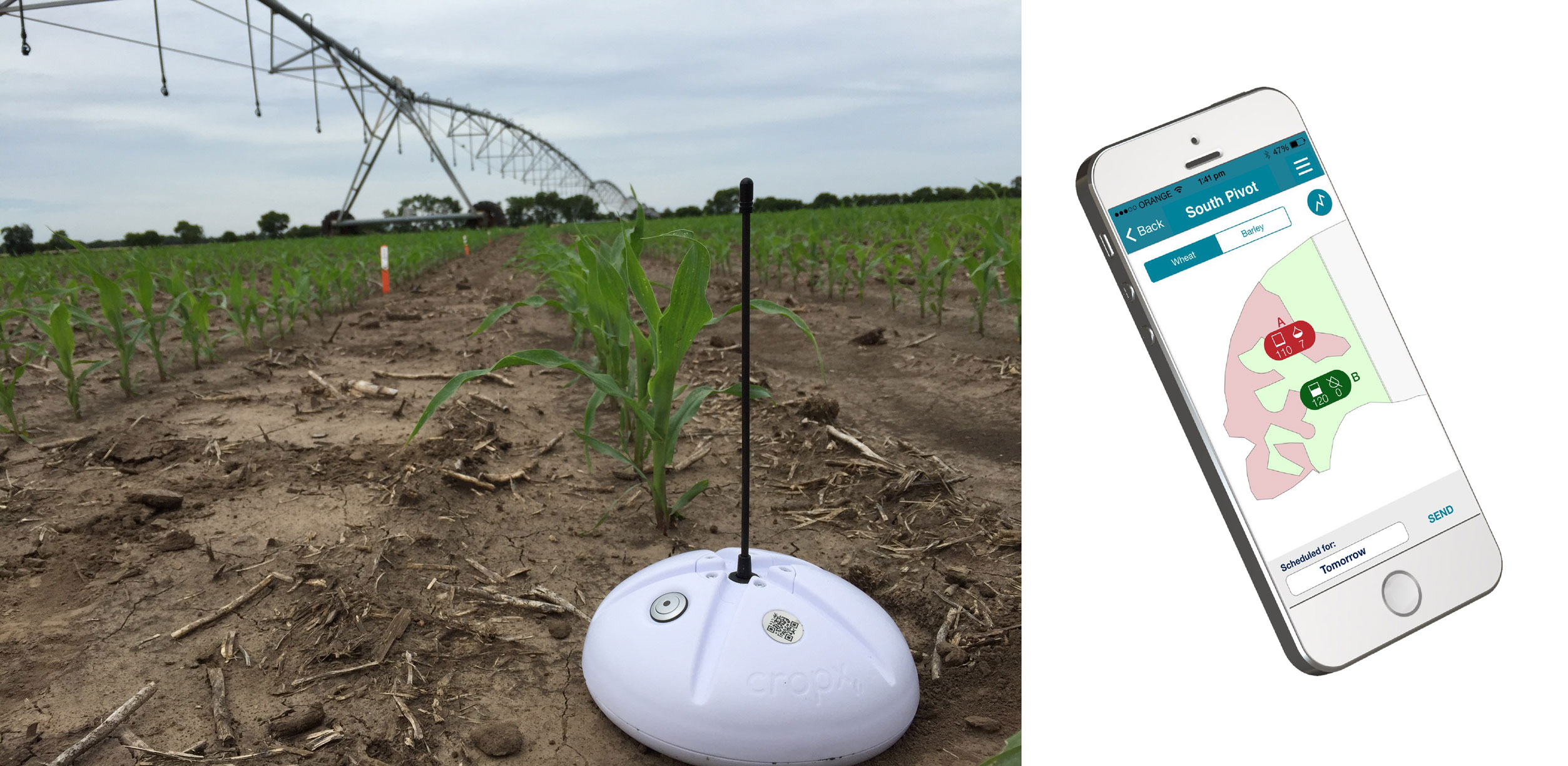
Photo: CropX
Blue River and CropX are among a large number of startups tackling the opportunities in precision ag and data management — from Granular to OnFarm to TerrAvion. Whether it’s IoT or remote sensing, these companies are working toward making our farming industry more efficient and effective.
Decreasing Reliability
There is no debate: Climate change is real. Yield reliability will decrease, with greater susceptibility to weeds and diseases and lesser predictability in the weather, which makes the lack of ag production diversification in the United States problematic. Corn and soy represent more than $100 billion dollars and more than 70 percent of U.S. food production.
Furthermore, the USDA National Agriculture Statistics show 44 percent of the total agriculture production in the United States sits within a 500-mile radius of St. Louis. Many crops have been neglected because of the high cost it takes to get a trait to market (e.g., on average, the industry spends $136 million in R&D costs per successful trait). “Diversification” may not be easy, but it is necessary.
To hedge against decreasing reliability, we need to:
- Find new ways to understand soil health and composition at scale, as it pertains to yield
- Create transparency around seed performance to optimize decisions around what to plant and how to grow it
- Find cheaper, faster R&D methods to develop new seeds, traits and integrated solutions for underserved markets
- Reduce and reuse the 1.3 billion tons of food that gets wasted each year
To improve the reliability of conventional farming, it starts with genetics and the soil. The decrease in the cost of genomic sequencing has opened a whole slew of opportunities: improving seed breeding, finding new plant traits and understanding our soil.
Genetically engineering microbes is a key example of foundational technology that will help address this very issue/challenge of reliability. Zymergen combines microbe science with computation and automation technologies.
Their technology precisely measures each step of the process in developing new microbial strains, and learns from this data — creating a microbial production process unparalleled at scale and speed. While they ingest data to improve their own processes in producing microbial strains, they also automate each step of the process, further driving down the cost of microbial production.
We see clear application of these low-cost genetically engineered microbial soil cocktails that have the potential to drastically improve soil health and composition.
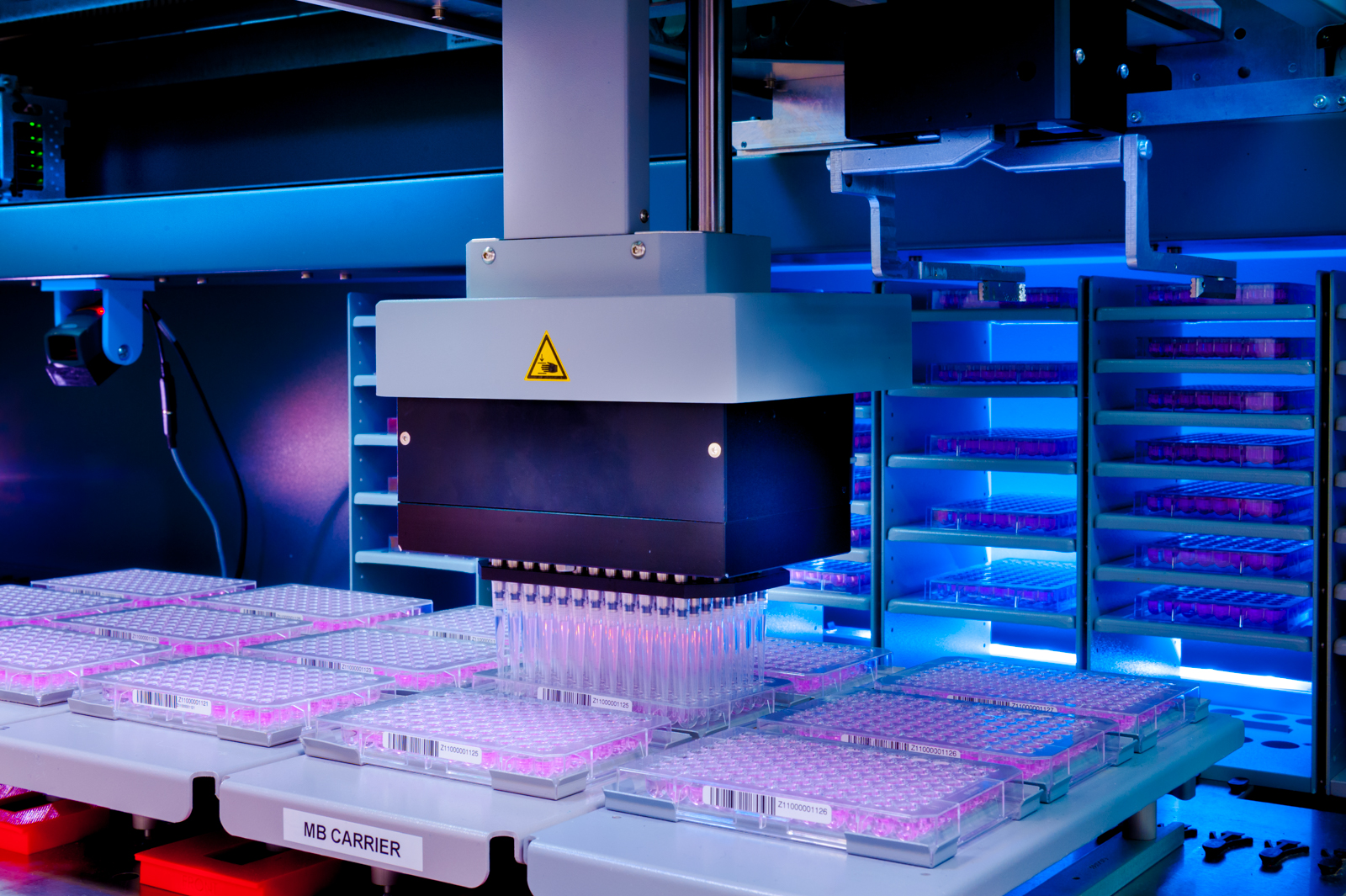
Photo: Albert Law
Other fascinating startups leveraging new genetics and bio-based technologies include Forrest Innovations (an RNAi technology) and Sample6 (a synthetic biology-based technology).
Changing Demand
In addition to supply challenges, the demand side of the equation is evolving. The organics market grew 11.3 percent in 2014 and is only anticipated to continue to grow. The debate over GMOs has highlighted greater consumer awareness about food production. Winds are changing — regulators are becoming more stringent around safety, traceability and environmental impact (e.g., the recent lawsuit against Iowa county boards for pollution).
The combination of evolving consumer preferences and shifting regulatory requirements will force us to:
- Develop new food options that cater to more health-conscious consumers without increasing the burden on the production system
- Find alternatives to weed, disease and pest control that use fewer chemicals (either through use-optimization or organic methods)
- Provide economical ways to ensure food safety and traceability throughout the production chain
Technologies such as computational biology, tissue engineering and automation will play a large role in changing demand trends. Take Modern Meadow as an example — they are using a tissue-engineering technique called “biofabrication” to create animal replacements (primarily leather).
Taking biopsied animal material, leather can now be grown in a petri dish — cultured cells multiply over the course of ~30 days. Although it might seem strange, biofabricated meats are no longer in realm of the impossible. In a world where consumers are becoming more environmentally minded and chemical-conscious, finding alternatives to traditional meat production methods will be critical.
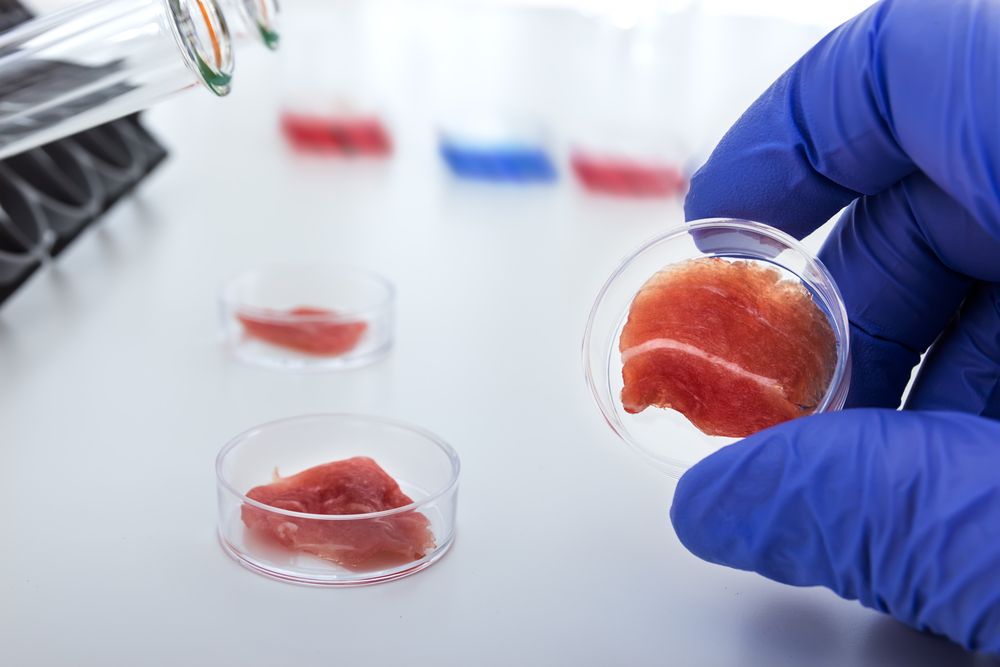
Photo: Shutterstock/Alex_Traksel
We’ve seen the emergence of a number of startups replacing animal-based proteins, heavily leveraging technologies in computational and synthetic biology — from Impossible Foods to Clara Foods to Muufri.
And moreover, we’re starting to see new technologies emerge in the food safety and traceability space — we see the movement from serotyping and phage typing of pathogens to molecular and nucleic acid-based subtyping (leveraging whole genome sequencing techniques). There is a world of interesting biology that can be applied in the agriculture space.
Where Do We Go From Here?
After considering all the challenges, some might become pessimistic. Yet, we find it inspiring — there is so much we can do! We can repurpose the technologies we’ve been developing to solve other problems and put them to work for agriculture.
Technology is the answer. The evolution of ubiquitous computing in the form of cheap sensors now allows us to get high-resolution, real-time data from the field. Cloud computing and machine learning allow us to use this massive amount of data to make smarter real-time decisions that improve yield and reduce costs.
Finally, improvements in genomics allow us to improve unpopular seeds and produce agricultural biologicals that have lower environmental impact than traditional fertilizers and chemicals.
These advancements in sensors, data, computation and genomics will spur us into the next food frontier. As U.S. Secretary of Agriculture Tom Vilsack said, “we need more innovation in the next 30 years than we did in the previous 10,000.”
